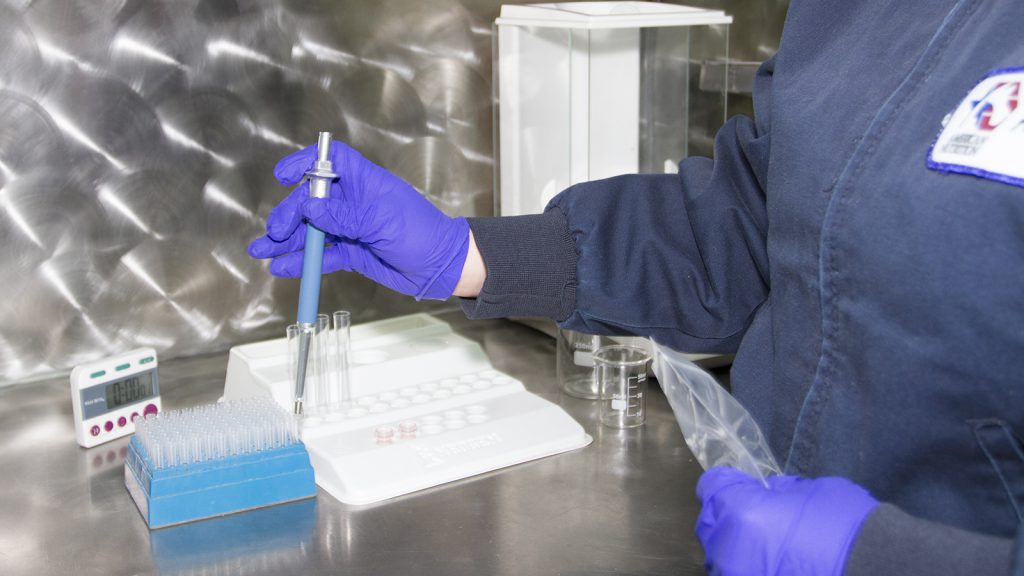As a reliable method of detecting salmonella, Listeria and other pathogens of concern, why is environmental monitoring (EM) only now garnering serious consideration from many pet food manufacturers?
Although deemed by many to be the last line of defense against hidden and harmful pathogens, some pet food manufacturers had historically did not see the need for an environmental testing program. Now, with the introduction of the Food Modernization and Safety Act (FSMA), environmental monitoring (EM) has a raised profile. Although not FSMA-required, it is FSMA-recommended as a verification method for the preventive controls called for in the legislation.
In this blog, we will review the purpose of environmental monitoring, its place in the context of new legislation and the weight it bears in ensuring a comprehensive food safety system.
What is Environmental Monitoring (EM)?
The purpose of an EM program is to establish written monitoring procedures to evaluate the effectiveness of a plant’s sanitation program and to establish corrective actions that will be implemented when environmental pathogens or indicator organisms are detected.
To accomplish this, manufacturers typically test microbiological samples of food contact surfaces for an indicator organism or nearby non-food contact surfaces/areas for the presence of a pathogen or indicator organism. Analysis can be conducted in-house or by an outside accredited laboratory.
Pathogens of concern vary depending on the processing environment and type of products manufactured in the plant. For example, the pathogen of concern in a dry plant (e.g., a plant that manufactures extruded dry dog or cat food) is Salmonella spp., whereas manufacturers would be on the lookout for Listeria monocytogenes in a wet/damp and cold environment (e.g., a plant that manufactures raw dog or cat food).
In addition, manufacturers often test for certain bacteria that may indicate product contamination. Enterobacteriaceae is a family of bacteria used by food processors as indicator organisms to assess the effectiveness of sanitation or processing.
Acceptable limits for common test bacteria are as follows:
- Salmonella: Negative per sponge
- Enterobacteriaceae: <1,000 CFU per sponge
- Listeria : Negative per sponge
EM & the FDA
Some safety-focused pet food manufacturers have incorporated environmental monitoring into their legacy food safety programs. But why is it that EM has earned newfound consideration among pet food manufacturers?
The FDA supports EM as a means of verifying preventive controls in circumstances when pet food contamination with an environmental pathogen is a potential hazard. Verification activities, per the final FSMA rule:
“include validating with scientific evidence that the control is capable of effectively controlling an identified hazard; confirming implementation and effectiveness; and verifying that monitoring and corrective actions (if necessary) are being conducted. Product testing and environmental monitoring are possible verification activities but are only required as appropriate to the food, facility, nature of the preventive control, and the role of that control in the facility’s food safety system.”
In summation, although EM is not explicitly required by FSMA, it is one of several activities qualified to verify that preventive controls are consistently implemented and effective. But its benefits don’t stop there.
The Value of EM in the Age of FSMA
In the past, manufacturers who elected to conduct environmental monitoring ran the risk of inviting additional regulatory involvement in response to at-risk findings. However, in light of ramped-up regulatory oversight prompted by FSMA, today, EM should instead be viewed as a valuable preventive measure in mitigating contamination risk. In addition to validating the effectiveness of a food safety program – a required FSMA activity – EM can be leveraged to discover hotspots, identify trends and quickly indicate the sanitation of the lines. It opens manufacturers’ eyes to early warning signs and allows them to address concerns through proactive corrective action – rather than post processing through product destruction, reprocessing or recall.
The scrutiny and accountability faced by pet food brands will only increase as FSMA’s final deadlines are reached in the coming months. Pet food manufacturers are already being called upon to revisit their safety programs and make additional investments in preventive controls. Now is the time for manufacturers and pet food brands alike to reconsider if going without an environmental monitoring program is really worth the risk.
